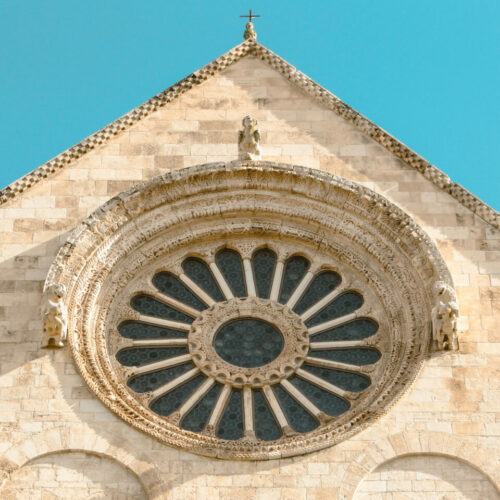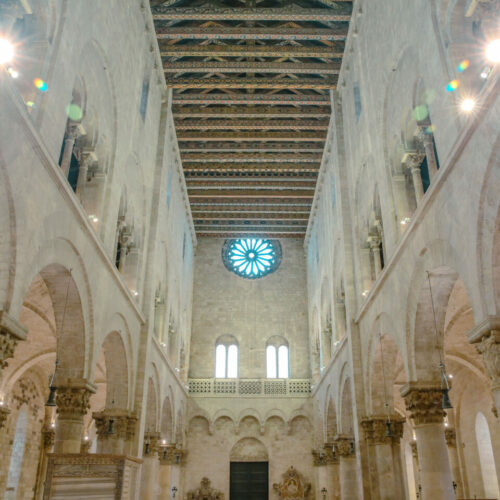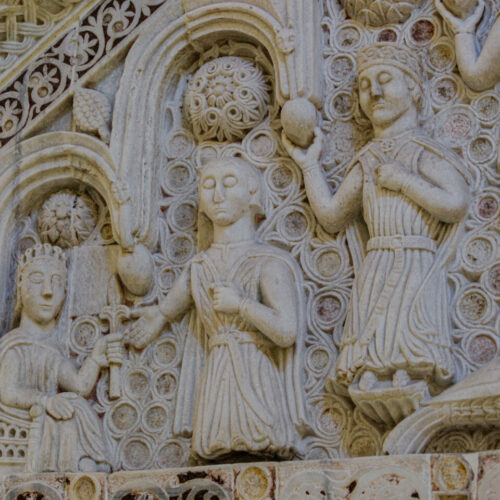Co-cathedral
The highest expression of Romanesque architecture in Apulia
Symbology and architecture merge in the story of Christendom from the 6th century to the Middle Ages, exalting the power of the Swabian dynasty.
Historical Notes
The Co-cathedral of Bitonto was built between the 11th and 12th centuries during Norman rule, modelled after the basilica of San Nicola in Bari. It is regarded as the most complete and mature expression of Romanesque architecture in Apulia.
Like many Apulian churches, Bitonto’s co-cathedral was covered with Baroque stucco work and decorations in the 18th century, but its original appearance was restored during 19th-century restorations. The ambo, one of the most important features in the Co-cathedral, is currently located on the right side of the nave. Made almost entirely of marble, it has a small lectern beautifully sculpted with precious carvings and fretwork.
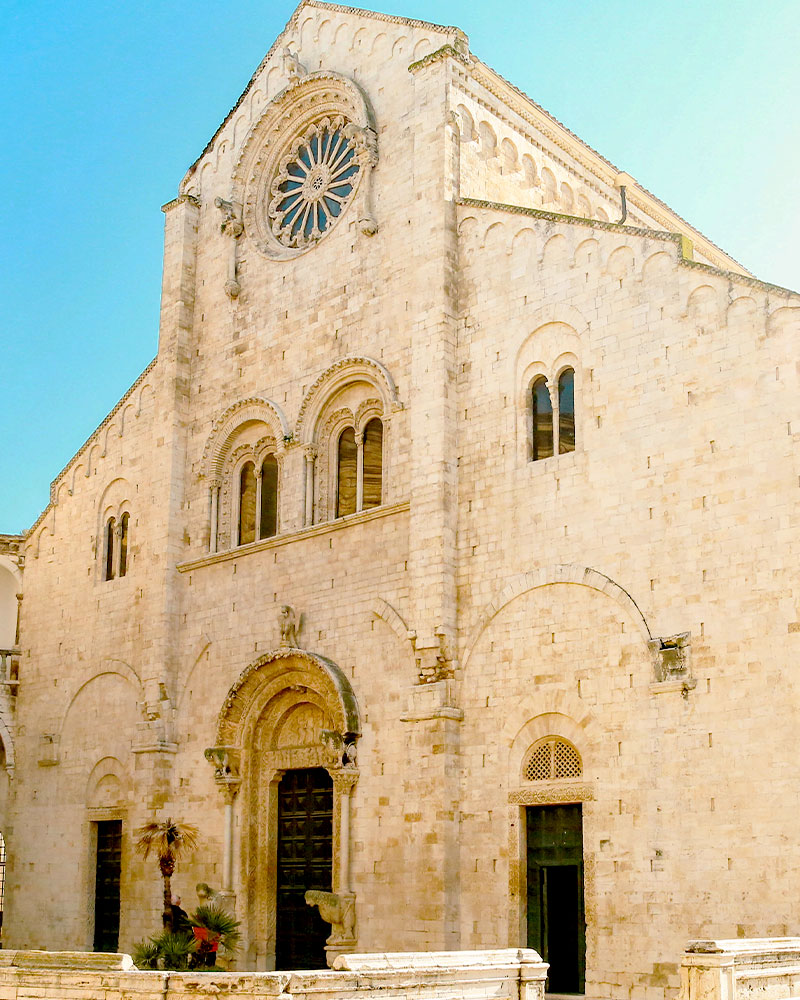
The Co-Cathedral of Bitonto
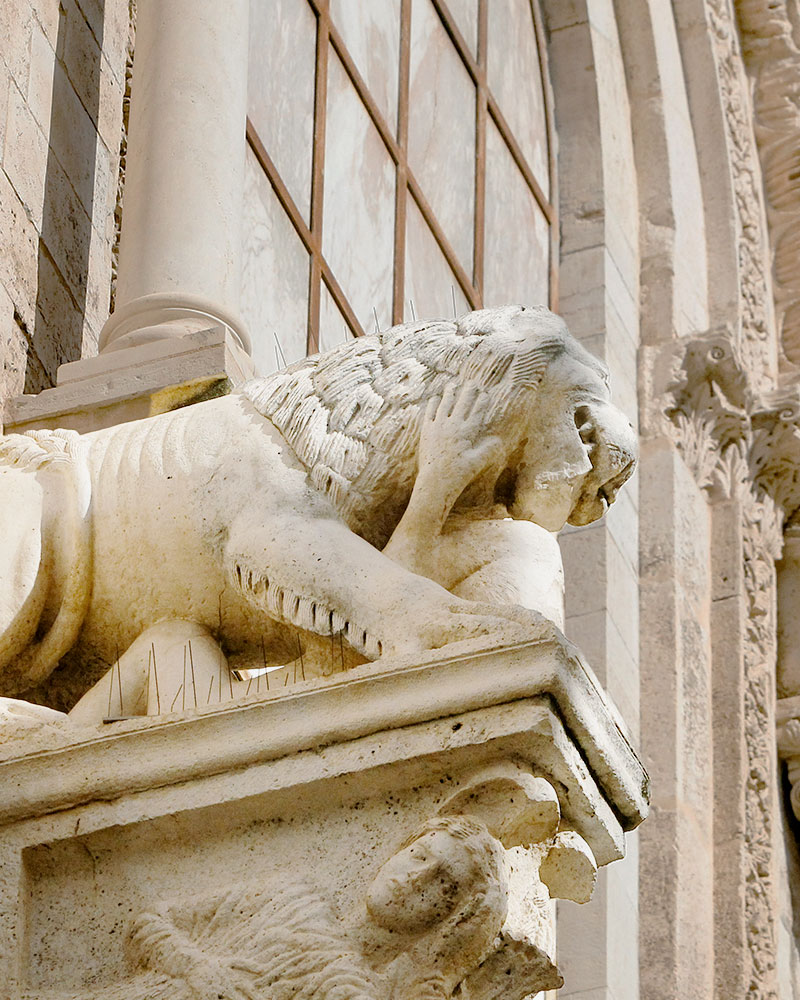
The main façade, detail of the supercharge
Exterior
The portal of the main facade bears an important symbolic representation and scenes from the New Testament. The portal’s surmounting arch is crowned by a pelican, a symbol associated with Christ, in the act in which the animal, according to legend, would rip open its chest to feed its young.
The surmounting arch is held up by a pair of griffins clutching prey in their talons, all of which is supported by columns resting on two life-sized lions.
Six large arches run along the south facade; in the sixth is the side entrance known as the “Portal of Excommunication” from which Pope Gregory IX excommunicated Frederick II in 1227.
The same façade features a rose window composed of small columns ending in plant decorations, and two stylophore griffins holding up the surmounting arch, at the top of which stands a sphinx.
The tall bell tower, also made of white limestone, makes the exterior even more impressive, with its mullioned two, three and four-light windows.
The sculptural decorations
The Co-cathedral has many fine sculptural and architectural features. These include the marble ambo, made in 1229 by Nicolaus sacerdos and magister. The lectern is composed of the figure of St Matthew holding an eagle, a symbol of St John with the lion and bull on the sides, and symbols of the other evangelists St Mark and St Luke.
The back side of the ambo is embellished with a trapezoidal slab which is thought to bear a carving of the Swabian family: Frederick Barbarossa is seated on the throne as he hands the sceptre to the next figure, Henry VI. Then come the standing figures of Frederick II and his son Conrad; below is an eagle, the symbol of the Swabian dynasty.
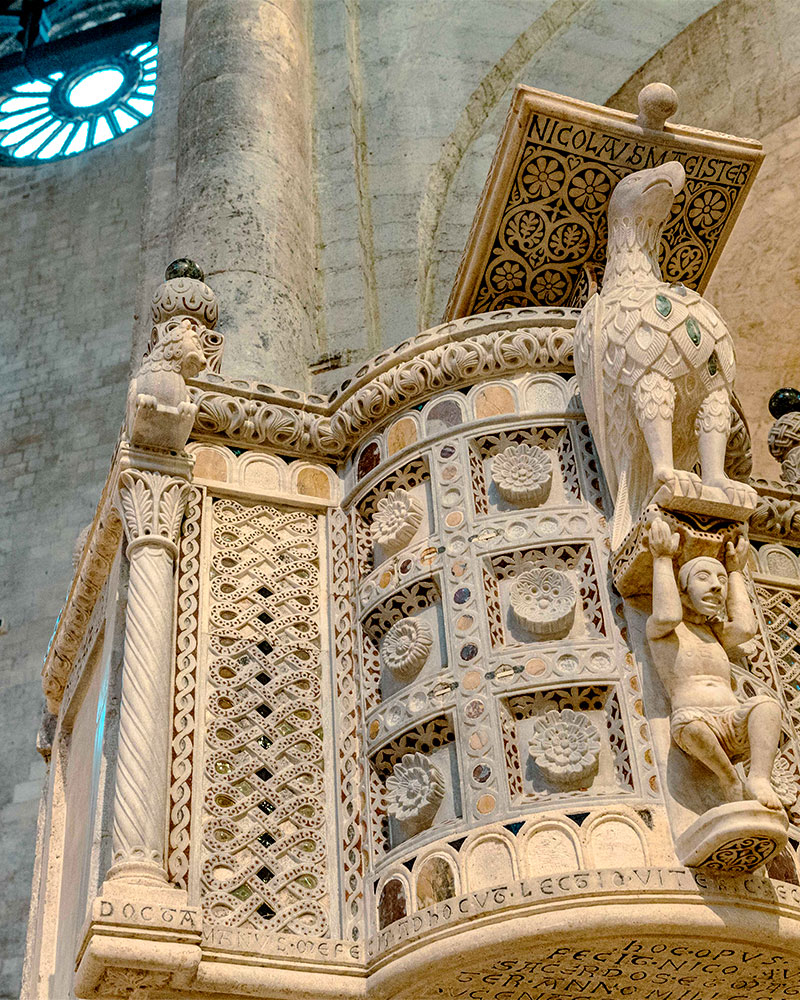
The marble ambo by magister Nicolaus
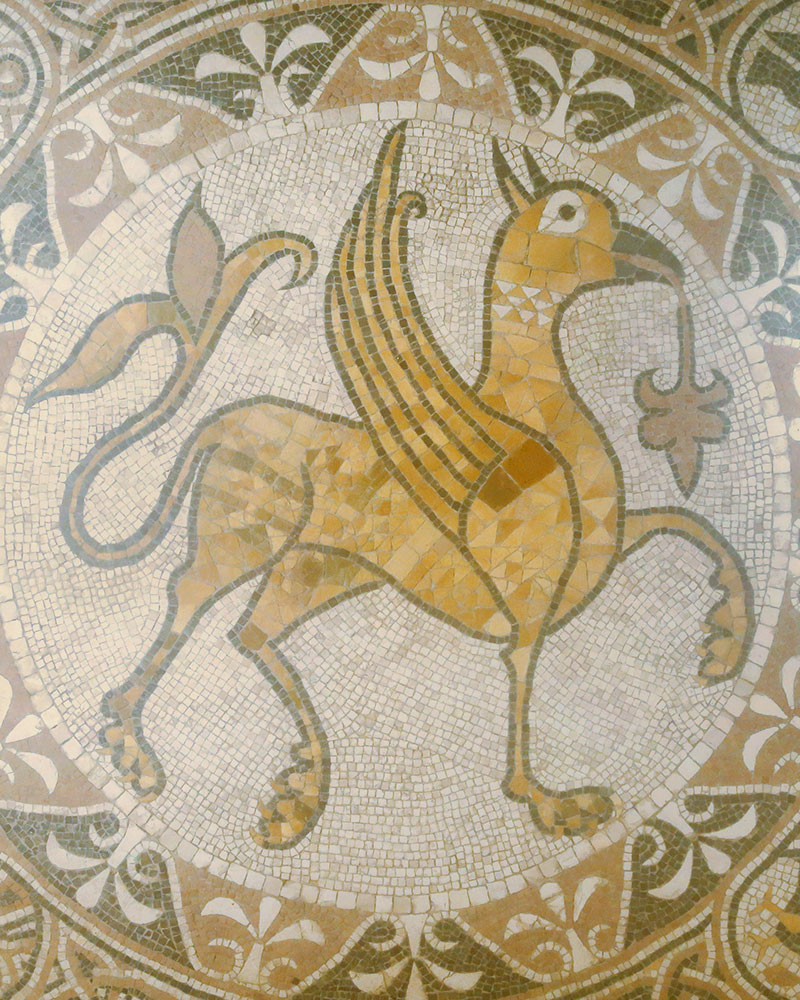
The Grifo's Mosaic
The Crypt
From the side aisles it is possible to access the underground Crypt, where visitors can admire a series of Byzantine-style frescoes from the 14th century and the magnificent mosaic depicting a gryphon, a mythological monster with a dual nature, a bird’s head and wings and a feline body, a symbol in Christian art of Christ’s dual nature, divine and human.
ArtEcclesiae is carried out by Artwork with the Archdiocese of Bari-Bitonto


ARTECCLESIÆ BARI-BITONTO
Piazza Odegitria
70122 Bari
Tel. 329-2697374
Email: info@artecclesiae.it

